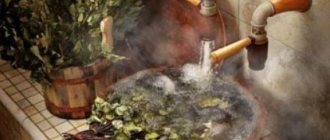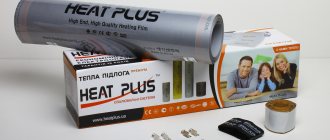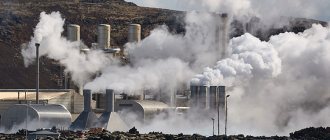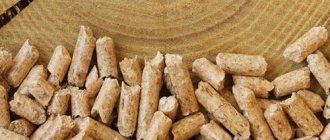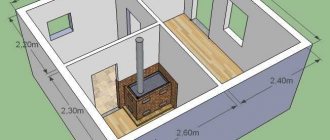Questionnaire for ordering equipment (doc. 210 Kb)
Effective energy management involves the rational use of resources and the use of energy-saving technologies. The introduction of low-power steam turbines designed to utilize excess water steam energy is an active energy saving measure. When using this technology, the required steam parameters are obtained not by throttling (irretrievable loss of energy), as in most boiler houses, but by expansion in the turbine to obtain additional mechanical energy.
Schematic diagram of the application of energy-saving technologies using steam turbines in boiler houses
| Steam turbines of the PTM and PTG types produced by ELTA LLC are designed to drive pumps, smoke exhaust fans and other mechanisms for their own needs instead of an electric drive, as well as electric generators for their own electricity production (mini-CHP). The steam exhausted in the turbine is used for process needs and heat supply. |
| An important distinctive feature of the design of turbines such as PTM and PTG is the ability to quickly manufacture them for any specific operating parameters. Turbines with capacities of 30, 250, 400, 500, 630 and 800 kW have already been developed |
| Impeller element - steam turbine blades | The use of high-tech technologies and modern materials made it possible to avoid most of the shortcomings and problems encountered during the installation and operation of energy machines. |
Steam plants at nuclear power plants
The design of a steam turbine at a nuclear power plant can be considered using the example of saturated steam installations, which are available only at those facilities where a water coolant is used. It is worth noting here that the initial characteristics of steam turbines at nuclear power plants are characterized by low performance. This forces you to pass a larger amount of working substance to achieve the desired result. In addition, this creates increased humidity, which quickly increases along the turbine stages. This has led to the need to use internal and external moisture collection devices at such facilities.
Due to the high humidity of the steam used, the efficiency decreases, and erosive wear of the flow parts also develops quite quickly. In order to avoid this problem, it is necessary to use various methods of strengthening the surface. Such methods include chrome plating, hardening, electric spark treatment, etc. If at other facilities it is possible to use the simplest device of steam turbines, then at nuclear power plants it is necessary not only to think about protection against corrosion, but also about moisture removal.
The most effective way to remove excess moisture from the turbine was steam extraction. The substance is selected for regenerative heaters. It is important to note here that if such selections are installed after each expansion stage, then there is no need to develop additional in-turbine moisture collectors. It can also be added that the permissible steam moisture limits are based on the diameter of the blade as well as the rotation speed.
The main advantages of small steam turbines PTM and PTG:
- Wide power range;
- Increased (1.2-1.3 times) internal efficiency (~75%);
- Significantly reduced installation length (up to 3 times);
- Low capital costs for installation and commissioning;
- Lack of an oil supply system, which ensures fire safety and allows operation in the boiler room;
- The absence of a gearbox between the turbine and the driven mechanism, which increases operational reliability and reduces noise levels;
- Possibility of smooth regulation from 0 to the nominal speed of the turbine shaft;
- Low noise level (up to 70 dBA);
- Low specific weight (up to 6 kg/kW of installed power)
- High resource. The turbine operation time before decommissioning is at least 40 years.
- When the turbine is used seasonally, the payback period does not exceed 3 years.
How does a steam turbine keep running?
In essence, steam turbines are an important part of a complex system designed to convert the energy of fuel into electricity, and sometimes into heat.
Now this method is considered cost-effective. Technologically it happens like this:
- solid or liquid fuel is burned in a steam boiler. As a result, the working fluid (water) turns into steam;
- the resulting steam is additionally overheated and can reach a temperature of 435 °C at a pressure of 3.43 MPa. This is necessary in order to achieve the highest efficiency of the entire system;
- the working fluid is transported through pipelines to the turbine, where it is equally divided among the nozzles using specialized units;
- the nozzles deliver live steam to curved blades mounted on the shaft, causing it to rotate. Likewise, the kinetic energy of expanding steam is converted into mechanical motion, this is the working principle of a steam turbine;
- the shaft of the generator, which is a “reverse electric motor”, is rotated by the turbine rotor, due to which electrical energy is generated;
- the exhaust steam penetrates the condenser, where, from contact with cooled water in the heat exchanger, it turns into a liquid and is again pumped into the boiler for heating.
Note. The maximum efficiency of a steam turbine can reach 60%, and the efficiency of the entire system - no more than 47%. Most of the fuel energy is lost through heat loss and is spent on overcoming the friction force during rotation of the shafts.
The practical diagram below shows the working principle of a steam turbine simultaneously with a boiler room, an electric generator and other system elements:
To prevent a decrease in operating efficiency, the maximum design number of blades is placed on the rotor shaft. At the same time, a minimum clearance is ensured between them and the stator housing using specialized seals. In ordinary words, so that the steam does not “spun in vain” from inside the housing, all gaps are minimized. The blade is therefore designed so that the increase in steam continues not only at the exit of the nozzle, but also in its recess. How this happens is shown in the working diagram of a steam turbine:
It must be said that the working fluid, whose pressure decreases after penetrating the blades, does not immediately penetrate the condenser after the working cycle in the first block. After all, it still has a sufficient supply of heat energy, and therefore the steam is sent through pipelines to the second low-pressure unit, where it again acts on the shaft using blades of a different design. As shown in the figure, the design of a steam turbine can take into account several similar blocks:
1 – supply of superheated steam; 2 – space for the unit to work; 3 – rotor with blades; 4 – shaft; 5 – exhaust steam outlet to the condenser.
For reference. The generator rotor speed reaches 30,000 rpm, and the steam turbine power reaches 1500 MW.
Comparison table of characteristics
Click to expand the entire table or view the table with a picture
| JSC Kaluga Turbine | OJSC "Electro-Technical Corporation" | CJSC "Small Independent Energy" | Russia | Jenbacher | |||
| Name | PTG-500-25-13/3 | TG 0.5A/0.4 R 13/3.7 | PTG R-0.6-15/3 | PROM-500/1500-E-14/3 | PVM-250 | GDG 50 | Jenbacher JMS 212 GS-N. L.C. |
| type of instalation | steam turbine generator | steam turbine generator | steam turbine generator | steam rotary volumetric machine | steam engine | gas piston engine | gas piston engine |
| power, kWt | 500 | 500 | 600 | 500 | 250 | 500 | 500 |
| Gearbox | No | There is | There is | No | No | No | No |
| Starting device | No | No | No | No | No | There is | There is |
| Oil supply system | No | There is | There is | There is | There is | There is | There is |
| Nominal steam pressure upstream of the turbine, MPa | 1,3 | 1,3 | 1,5 | 1,4 | 1,4-0,9 | ||
| Nominal steam temperature before the turbine, ºС | 192 | 250 | 350 | 194 | 194 | ||
| Steam pressure after the turbine, MPa | 0,3 | 0,37 | 0,3 | 0,3 | 0,45-0,1 | ||
| Steam temperature after the turbine, ºС | 132 | 230 | 132 | ||||
| Steam consumption, t/h | 9 | 13,2 | 9 | 9,1 | 39697 | ||
| Weight (with generator), t | 4,64 | 9,39 | 10 | 5,7 | 2,5 | 13,5 | 8,6 |
| Length, mm | 1765 | 4235 | 5110 | 2810 | 2850 | 4100 | 4600 |
| Width, mm | 1360 | 2130 | 2100 | 1100 | 1000 | 1500 | 2202 |
| Height, mm | 1465 | 2270 | 3110 | 1205 | 2000 | 1850 | 2300 |
Classification of steam turbines
Based on their operating principle, active turbines and reactive turbines are distinguished. Based on the number of stages, turbines are divided into single-stage and multi-stage turbines. In a single-stage steam generator, it is not possible to fully utilize the energy of steam, so modern technology. P. t. are built in multi-stage. Based on the direction of the flow of the working fluid, axial (axial) rotor pumps are distinguished (the direction of the flow coincides with the direction of the rotor axis; the most common type of rotor pumps used to drive electric generators) and radial rotor pumps (the flow is carried out in the radial direction or from the rotor axis to the periphery of the disks, or vice versa - from the periphery to the axis). Depending on the steam pressure, there are: low (no higher than 0.9 MPa), medium (no higher than 4 MPa), high (9–14 MPa) and supercritical. pressure (24 MPa or more).
Depending on the nature of the thermal process, thermal turbines are divided into 3 groups: condensing turbines, district heating turbines, and special turbines. appointments.
Cogeneration heating plants serve for simultaneous receiving electricity and thermal energy. Basic The final product of such heat is heat. Thermal power plants on which heating power plants are installed are called combined heat and power plants. District heating turbines include turbines with back pressure, with controlled steam extraction, and also with extraction and back pressure. Backpressure turbines do not have a condenser. Exhaust steam, which has a pressure above atmospheric pressure, enters the special. collection manifold, from where it is sent to thermal consumers for technological purposes. purposes (cooking, drying, heating, etc.). In turbines with controlled extraction, part of the steam is removed from the first or second intermediate stages, and the rest of the steam goes to the condenser. The pressure of the extracted steam in all operating modes of the turbine unit is automatically maintained constant or regulated within specified limits so that the consumer receives steam of a certain quality. There are two types of heat consumers: industrial, which requires steam with a pressure of up to 1.3–1.5 MPa (production extraction), and heating, with a pressure of 0.05–0.25 MPa (heat extraction). If steam is required for both production and heating. purpose, then two controlled extractions can be carried out in one turbine; The extraction location (turbine stage) is selected depending on the required steam parameters. In turbines with extraction and back pressure, part of the steam is removed from the first or second intermediate stages, and all the exhaust steam is directed from the exhaust pipe to the heating. system or to network heaters.
Special-purpose power plants usually operate on waste heat from metallurgical and mechanical engineering. and chemical enterprises. These include steam generators with “crushed steam”, with an intermediate supply of steam (two-pressure turbines) and pre-powered turbines. P. t. "crushed steam" use low-pressure exhaust steam after technological process. processes (pairs of piston machines, steam hammers and presses), which according to k.-l. reasons cannot be used for heating. or technological needs. The pressure of such steam is usually slightly higher than atmospheric, and it is sent to a special facility. condensation turbine ("crushed steam" turbine). Two-pressure steam generators operate on both fresh and exhaust steam from steam mechanisms supplied to one of the intermediate stages. Upstream turbines are turbines with high initial pressure and high back pressure; All exhaust steam from these steam generators is sent further to conventional condensing turbines.
Efficient use of steam turbines PTM and PTG
Can be used in all enterprises where there is a source of steam:
- Metallurgical production with a cooling circuit;
- Chemical and pharmaceutical plants using an evaporation system;
- At any steam boiler houses;
- Woodworking enterprises;
- At agricultural enterprises processing;
- At enterprises for processing organic waste by oxidation;
- At waste incineration plants;
- At thermal power plants, state district power plants;
- At micro thermal power plants;
- In turboexpander units;
- At nuclear power plants.
| Demonstration of the PTM steam turbine assembly area | The use of steam turbines of the PTM and PTG types makes it possible to use energy resources more efficiently, save or independently generate electrical energy, and increase the reliability of the enterprise and its energy supply. |
Steam turbine operation
In a turbine unit located in a boiler, three media: water, steam, and also condensate create a kind of closed cycle. During the change process, only a minimal amount of steam and water is lost. This amount of water is regularly replenished by adding raw water to the installation, which passes through a filter in advance to purify the water. There, the water is treated with chemical compounds necessary to remove unnecessary impurities in the water mass.
Working principle:
- Exhaust steam with sufficiently reduced pressure and temperature penetrates from the turbine into the condenser.
- There he encounters a system of different tubes along the way, through which cooling water is constantly pumped using a circulation pump. They take it mainly from rivers, lakes or reservoirs.
- When the condenser tube comes into contact with the cold surface, the generated steam condenses, thus turning into water (condensate).
- Constantly being pumped out of the condenser by a specialized pump, the condensate penetrates through the heater into the deaerator.
- From there the pump transfers it to the steam boiler.
The installation also has a turbocharger and a heater. Its function is considered to be the need to provide the condensate with an additional amount of heat. Modern steam turbine plants are mainly equipped with several heaters. In addition, to heat the feed fluid, you mainly need heat from steam, which is taken from the intermediate stages of the turbine itself within 15-30% of the total steam consumption. This gives an excellent increase in the efficiency of the installation.
Example of use - turbo drive of a smoke exhauster
| The PTM-800 turbine is used as a drive for the GD-31 smoke exhauster at enterprises with steam resources. The energy supply from replacing the electric drive with a turbo drive is 798 kW/hour. At an electricity cost of 1.5 rubles/kWh, annual savings amount to 6.5 million rubles. The payback period of the turbine is 1.5 years. | PTM steam turbine assembly area |
Characteristics of the PTM-800 turbo drive
| Power | up to 800 kW |
| Shaft rotation speed | 750 rpm |
| Steam at the inlet to the turbo drive is dry, saturated, with absolute pressure | 3 MPa |
| Steam inlet temperature | 192 0C |
| Outlet steam pressure | 0.4 MPa |
| Nominal steam consumption | 16 t/h |
| Noise level | up to 90 dBA |
| Dimensions (length x width height) | 500x2800x2400 mm |
| Weight with frame | 11 tons |
Application example - turbo drive of a network pump
| One of the successful application options is the turbo drive of the PTND-175/90-25-250/13:4 pump, created on the basis of a PTM-type steam turbine and designed to effectively replace the electric motor of the 1D630-90 network pump. Due to its small dimensions and ease of installation, the turbine is installed on the foundation plate of the electric pump and does not require significant reconstruction. |
Using a pump turbo drive allows you to:
- Receive economic benefits from energy savings of 245 kW/hour per network pump drive;
- Use energy resources more efficiently;
- Increase the reliability of the boiler room in emergency cases of power outages in the network;
- Increase the smoothness of regulation;
- Reduce noise level.
Characteristics of the turbo drive of the pump PTND -175/90-25-250/13:4
| Power | up to 250 kW |
| Shaft rotation speed | 900…1500 rpm |
| Network water consumption, nominal | 175 l/s |
| Network water pressure, nominal | 90 m. water. Art. |
| Steam at the inlet to the turbo drive is dry, saturated, with absolute pressure | 1.3 MPa |
| Steam inlet temperature | 192 0C |
| Outlet steam pressure | 0.2…0.4 MPa |
| Nominal steam consumption | 6.1 t/h |
| Noise level | up to 80 dBA |
| Dimensions (length x width height) | 1185x1360x1550 mm |
| Weight with frame | 2.96 tons |
| Work resource | at least 300,000 hours |
